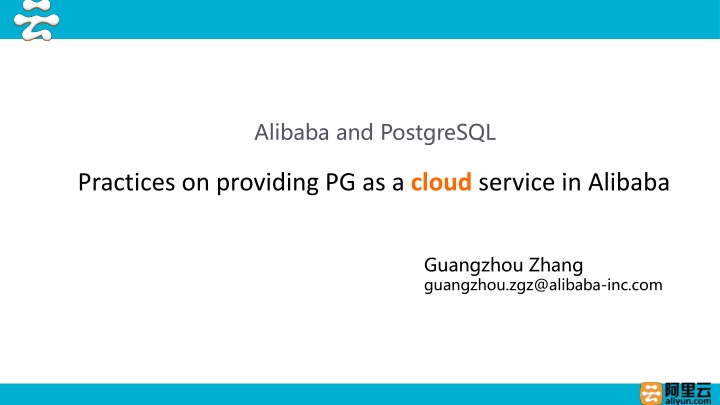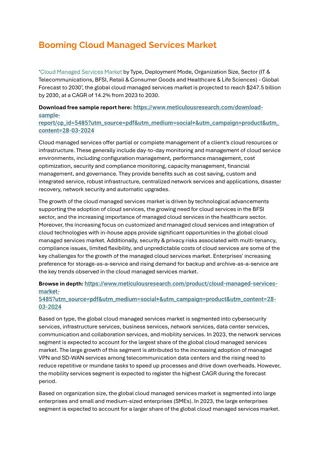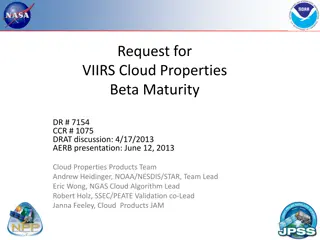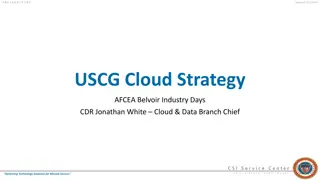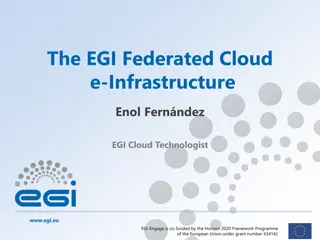PostgreSQL Practices for Cloud Service at Alibaba
Explore how Alibaba provides PostgreSQL as a cloud service in Guangzhou, focusing on technical details, background about PG in Alibaba, issues faced, solutions implemented, and future directions. Learn about Alibaba's use of PostgreSQL in its internet businesses and as a replacement for Oracle, along with details on AliCloudDB database service and cooperation with EDB. Delve into the architecture of the cloud service for PG and the challenges in enabling PG as a cloud service, including transparent switch-over needs.
Download Presentation

Please find below an Image/Link to download the presentation.
The content on the website is provided AS IS for your information and personal use only. It may not be sold, licensed, or shared on other websites without obtaining consent from the author.If you encounter any issues during the download, it is possible that the publisher has removed the file from their server.
You are allowed to download the files provided on this website for personal or commercial use, subject to the condition that they are used lawfully. All files are the property of their respective owners.
The content on the website is provided AS IS for your information and personal use only. It may not be sold, licensed, or shared on other websites without obtaining consent from the author.
E N D
Presentation Transcript
Alibaba and PostgreSQL Practices on providing PG as a cloud service in Alibaba Guangzhou Zhang guangzhou.zgz@alibaba-inc.com
About this talk Firstly some background about PG in Alibaba Then issues and our solutions with providing PostgreSQL as a cloud service Finally future directions of our database cloud service Focuses on technical details and NOT from business-level or application development perspectives
PostgreSQL and Alibaba Alibaba Founded in 1999 now one of the world largest internet companies Its cloud services (alicloud.com) cover both private and public cloud, which have gained the largest market share in China and being growing fast (revenue up 126% in 2015 Q4) Alibaba loves PostgreSQL Uses PG in its own internet businesses Government and state-owned companies are moving out of Oracle solutions. PG is the most perfect replacement for Oracle Counts on PG to attract Oracle users to its cloud services
PostgreSQL and Alibaba Alibaba uses PG for its own internet businesses Map service Online to Offline services CRM
PostgreSQL and Alibaba Provided PG as a cloud service at alicloud.com AliCloudDB database service for PG went online at alicloud.com in 2015.6 Cooperated with EDB to provide EDB s Postgres Advanced Server as a cloud service
Architecture of cloud service for PG Master User requests thru VIP HA Slave PG Instances LVS (Linux Virtual Server) Proxy layer
Issues on enabling PG as a cloud service Transparent switch-over with Proxy Transparent connection pool with Proxy Handling OOM Handling IO hang Privilege Management
Needs for transparent switch-over There are quite a few cases requiring instance restart. And we implement a restart with switch-over Upgrade or degrade an instance s class (e.g. from 2G mem to 4G) Move an instance from one machine to another PG kernel version upgrades Transparent switch-over is the process that does a switch-over without breaking existing user connections. This is key to SLA and customer satisfactory
A normal switch-over Master HA Proxy layer Slave PG Instances
A transparent switch-over Master HA Proxy layer Slave PG Instances
Transparent switch-over with Proxy Proxy does the connection re-establishing out of transaction boundaries Only for connections that have not done anything not re- creatable Temporary table usage Statement preparation Change the kernel to support a command like set connection_user to xxx for proxy to re-establish connection without an explicit authentication process
A transparent switch-over Master Application user HA Change user to app user Proxy layer Slave PG Instances
Needs for transparent connection pool Connection establishment is costly for PG Performance is bad for short-connection applications Backend process Proxy PG Instance
Transparent connection pool with Proxy Conn pool Backend process Proxy PG Instance
Transparent connection pool with Proxy Proxy needs to restore all the resources held by this connection before putting it into the connection pool DISCARD ALL is issued for this purpose Authentication needs to be performed against the incoming user when connection is reused Change the kernel to support SET AUTH_REQ = user/database/md5password/salt for authentication
Handling OOM OOM (out of memory) cases were frequently observed Cloud users tend to buy small class instance firstly, then regularly upgrade to higher class PostGIS large objects or big json objects are widely used in some instances Concurrent connections are not suitably configured by application When an instance goes OOM, one of its processes is picked up and killed by the Linux kernel. Postmaster process then detects the kill and restart the whole instance. All connections are then lost. How can we minimize OOM impact for users?
Handling OOM Linux Box CGroup CGroup backend backend backend backend backend backend
Handling OOM Linux Box CGroup CGroup backend backend backend backend backend backend CGroup Kill USR2 Public CGroup
Handling IO Hang Symbols of IO hangs (ext4 filesystem with mount data=order on Linux) Message in PG error log: WARNING: using stale statistics instead of current ones because stats collector is not responding Long checkpoint fsync time (observed from error log when log_checkpoints set to on) Nearly all operations including setup of a new connection hang for > 10s. All instances on the same machine are affected. But IO usage is low (< 10%) for the problematic disk.
Handling IO Hang We observed such hangs are quite frequent. We found it gets worse when: Many instances shares one same disk and ext4 file system in our environment create database <YYY> template <XXX> which will cause large file copying and fsyncing if template db <XXX> is large
Why IO Hang? fsync can be slow Linux Box CGroup backend File 1 metadata backend Ext4 journaling buffer for metadata checkpointer Dirty data in IO queue File 2 metadata fsync
Why IO Hang? write() can be blocked by fsync() Linux Box CGroup write backend File 1 metadata backend Ext4 journaling buffer for metadata checkpointer Dirty data in IO queue File 2 metadata fsync
Handling IO Hang Mount ext4 with option data=writeback Do this only when your PG full_page_image has been set to on Change the kernel to call sync_file_range() before calling fsync in checkpointer process
Privilege Management Superuser privileges are kept from the cloud service users for security reason Users keep on asking for more superuser privileges for managing roles and data of the whole instance We have to loose privilege check for some cases to make users happy
Our solution for Privilege Management Creating a new role rds_superuser Allow this role to manage all other non-superuser s data Allow it to set specific configuration parameters In order not to break the catalog compatibility, we manage to reuse a flag in pg_authid to identify rds_superuser roles
Our solution for Privilege Management Table "pg_catalog.pg_authid" Column | Type | Modifiers ----------------+--------------------------+----------- rolname | name | not null rolsuper | boolean rolinherit | boolean rolcreaterole | boolean rolcreatedb | boolean rolcatupdate | boolean rolcanlogin | boolean | not null | not null | not null | not null | not null | not null
Future Directions Support data sharding across machines with proxy Slave Master Slave Master User requests thru VIP Slave Master Slave Master LVS (Linux Virtual Server) Proxy layer
Future Directions Support shared-data architecture WRITE READ SLAVE MASTER WRITE READ
Future Directions Providing Greenplum as a cloud service Segment Mirror Segment Primary Master Proxy layer LVS (Linux Virtual Server) Master node Mirror nodes Primary nodes
Q&A THANKS!
